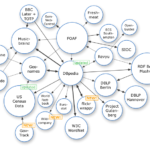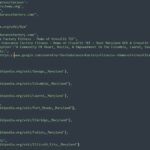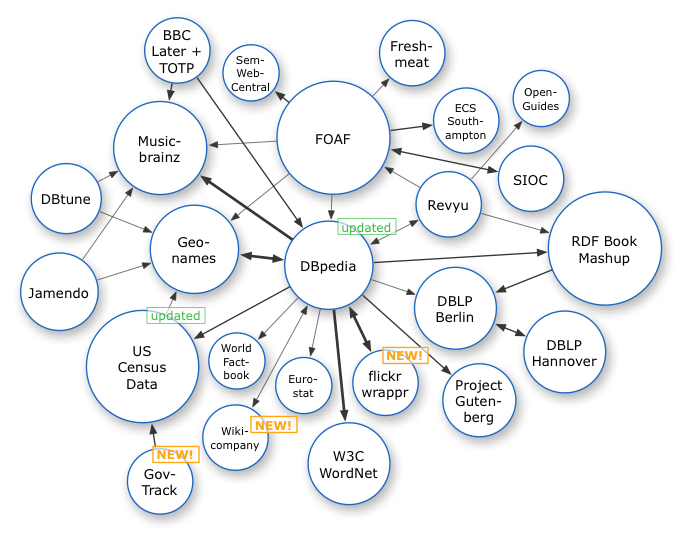Table of Contents
ToggleIn the realm of SEO strategy optimization, predictive analytics emerges as a pivotal tool, empowering professionals to refine their approaches with a high degree of precision and foresight. By meticulously analyzing historical data, this advanced technique facilitates the anticipation of search trend trajectories and user interaction patterns.
Predictive analytics integrates cutting-edge machine learning algorithms, enabling the strategic forecasting of SEO performance and the preemptive identification of keywords likely to gain prominence. Consequently, this facilitates a proactive adaptation to search engine algorithmic updates. For practitioners committed to mastering SEO, the application of predictive analytics is essential, offering a compelling competitive edge through enhanced decision-making and optimization of marketing investments. It is a cornerstone in building a data-centric, agile SEO strategy that adapts to the ever-evolving digital search landscape.
Key Takeaways
- Predictive analytics in SEO strategy optimization involves utilizing historical data, statistical algorithms, and machine learning techniques to identify patterns and trends and infer future behavior or results.
- It is instrumental in enhancing the predictive accuracy of SEO campaigns by examining traffic trends over time, analyzing keyword performance, and scrutinizing backlink profiles.
- Predictive analytics is also used for keyword research and user behavior prediction, helping to identify emerging search patterns, analyze competitor keyword strategies, and anticipate market shifts and consumer interests.
- Additionally, it plays a crucial role in market trend anticipation and algorithm change preparedness by analyzing patterns in search query data and online consumer behavior, forecasting changes in user search patterns, and adjusting strategies based on shifts in keyword relevance.
Understanding Predictive Analytics
Predictive analytics encompasses the utilization of historical data, statistical algorithms, and machine learning techniques to forecast future outcomes. It is a data-driven, technical discipline that leverages advanced analytics capabilities to process and analyze vast amounts of data. The aim is to identify patterns and trends from which to infer future behavior or results with a measure of confidence. This analytical methodology is instrumental in SEO strategy optimization, enabling professionals to anticipate market trends, user behavior, and search engine algorithm changes. By applying predictive analytics, SEO strategists can make informed decisions, improve targeting, and enhance the overall effectiveness of their campaigns. It stands as a cornerstone of contemporary data analytics, providing a strategic edge in a data-saturated digital landscape.
Historical Data Analysis
Analyzing historical data equips SEO strategists with the ability to discern patterns that inform future optimization strategies. By meticulously sifting through past performance metrics, professionals can pinpoint which strategies yielded the most significant improvements in search engine rankings and user engagement. This retrospective examination is critical in refining SEO tactics to align with evolving algorithms and market trends.
- Examination of traffic trends over time to understand consumer behavior
- Analysis of keyword performance to adjust targeting strategies
- Scrutiny of backlink profiles for insights into domain authority and relevance
Each bullet point represents a core component of data analysis that can dramatically enhance the predictive accuracy of SEO campaigns. Mastery in this domain is predicated on an analytical mindset and a rigorous approach to data interpretation.
How can the insights gleaned from historical data analysis be leveraged to accurately forecast future SEO performance?
By employing predictive analytics, one can extrapolate from past SEO success metrics to model future outcomes. This involves a rigorous examination of trends in search engine rankings, organic traffic, and conversion rates. Statistical algorithms can analyze patterns in user behavior, keyword performance, and content engagement to predict how these factors might influence future SEO success.
Predictive Keyword Research
Keyword trend analysis, a core component of predictive keyword research, enables SEO strategists to anticipate market shifts and consumer interests, thus refining their content optimization efforts. Harnessing historical data, current market signals, and sophisticated algorithms, this approach provides a competitive edge by predicting future search queries and user behavior.
- Utilization of machine learning models to identify emerging search patterns
- Analysis of competitor keyword strategies to uncover gaps and opportunities
- Integration of social media trends to forecast consumer interest shifts
Incorporating this data-driven methodology allows for a more proactive approach to SEO. By identifying potential keyword trends before they become mainstream, businesses can create content that resonates with their audience, ultimately driving traffic and improving search engine rankings.
User Behavior Prediction

The application of predictive analytics extends to forecasting user behavior, thereby allowing SEO experts to tailor strategies that align with anticipated online actions and preferences. By employing data-driven methodologies, SEO practitioners can analyze historical user interactions, search patterns, and engagement metrics to construct precise models of future behavior. This predictive insight is pivotal in optimizing website architecture, content relevance, and user experience design. Advanced algorithms parse through vast datasets to identify correlations and trends that signal user intent, enabling a granular approach to strategy adaptation. The technical rigor behind such predictive models ensures that SEO strategies are not only reactive but proactive, aligning with the evolving digital landscape and maintaining a competitive edge in SERP rankings.
Market Trend Anticipation
Predictive analytics empowers SEO strategists to anticipate market trends by analyzing patterns in search query data and online consumer behavior. This proactive approach allows for the optimization of SEO strategies to align with evolving search interests and the competitive landscape. Utilizing historical data and machine learning algorithms, SEO professionals can forecast changes in user search patterns, ensuring that content remains relevant and highly visible in search engine results pages (SERPs).
- Identification of emerging keywords and topics for content creation.
- Analysis of competitor positioning to adapt SEO tactics.
- Seasonal fluctuations and event-driven spikes in search traffic prediction.
Algorithm Change Preparedness
Informed by historical search data, SEO experts employ predictive analytics to prepare for and adapt to algorithm changes that can significantly affect search rankings. This preparation involves analyzing patterns within the data to forecast potential updates, enabling a swift response to alterations in search engine algorithms. By utilizing a data-driven approach, they identify morphological shifts indicating the evolution of keyword relevance and adjust strategies accordingly.
By interpreting industry measurements, such as shifts in ranking factors, professionals can predict changes and preemptively optimize content. This kind of preparedness ensures that SEO strategies remain robust and agile, capable of sustaining visibility in a dynamic digital environment, thus safeguarding against the adverse effects of unforeseen algorithmic adjustments.
Content Strategy Formulation
SEO strategists’ employment of predictive analytics facilitates the meticulous formulation of content strategies that cater to evolving search trends and user behaviors. By leveraging data, they can anticipate and react to the dynamic nature of search queries and preferences, ensuring that content remains relevant and engaging. This forward-looking approach is grounded in a thorough analysis of patterns and correlations within vast datasets.
To draw the audience in and keep them interested, consider the following:
- Utilization of historical data to forecast content relevance and demand
- Integration of machine learning algorithms to refine content targeting strategies
- Analysis of competitor content performance to identify gaps and opportunities
These bullet points underscore a strategic, data-driven mindset that is essential for SEO professionals aiming to master the art of content strategy in the digital age.
SERP Position Projection

The SEO strategist’s toolkit now increasingly includes SERP position projection, a technique that harnesses predictive analytics to estimate a website’s future ranking on search engine results pages. This method applies morphological analysis and industry measurements to forecast ranking outcomes based on historical data and trending variables. By analyzing the morphology of search queries and the changing dynamics of SERPs, SEO professionals can adjust their strategies with a higher degree of granularity and precision.
Predictive models evaluate product brands, local points of interest, and other salient entities to quantify their impact on a website’s visibility. The insights gained enable a proactive rather than reactive approach, optimizing efforts to align with the projected shifts in SERP landscapes. This data-driven foresight is crucial for maintaining and improving online presence in a competitive digital ecosystem.
Traffic Growth Estimation
Numerous businesses leverage predictive analytics to estimate future website traffic growth, utilizing historical data and current market trends. This approach enables a data-driven forecast to inform strategic SEO decisions. The process often involves:
- Analysis of time-series data to identify patterns and seasonality in website traffic.
- Application of machine learning algorithms to predict traffic based on identified trends.
- Utilization of regression models to correlate traffic with specific SEO actions and market changes.
This technical methodology demands a high level of analytical proficiency and a deep understanding of both SEO and statistical analysis. Mastery of traffic growth estimation can significantly enhance the precision of SEO strategies and contribute to the measurable success of digital marketing efforts.
Conversion Rate Optimization
Building on the predictive analytics used for traffic growth estimation, conversion rate optimization harnesses these insights to improve the likelihood of visitors completing desired actions on a website. Utilizing industry measurements such as click-through rates and bounce rates, SEO professionals employ a data-driven approach to refine web pages, which is critical for maximizing conversions. This practice, deeply rooted in the analysis of user behavior metrics, allows for the systematic tweaking of page elements, including call-to-action buttons and navigational structure, to enhance user experience and funnel efficiency. By meticulously assessing and iterating on these key performance indicators, businesses can effectively increase conversion rates, leading to higher return on investment and more successful outcomes for their online initiatives.
Predictive Analytics Tools
Predictive analytics tools leverage historical data and algorithmic models to provide insights that can inform content creation, keyword targeting, and market analysis. By integrating predictive analytics, SEO professionals can preemptively adjust their strategies to align with the anticipated shifts in the digital landscape.
- Data Mining Software: Extracts patterns from large datasets to identify search behavior trends.
- Machine Learning Platforms: Utilizes algorithms to predict future outcomes based on past data.
- SEO Forecasting Tools: Projects future search volume and rankings for targeted keywords.
Adopting these tools enables a data-driven approach to SEO, facilitating more informed decisions and potentially increasing the return on investment for SEO activities.
Data-Driven Decision Making
By leveraging historical data, SEO professionals morph raw information into strategic insights, adhering to industry measurements and unique industry standards. Predictive analytics enables the identification of morphological trends within search query data, allowing for the optimization of content to align with user intent. This technical approach utilizes local points of interest in search behavior to refine keyword strategies, ensuring that product brands maintain relevance within search engine results pages. The analytical process underpins the execution of SEO tactics with statistical evidence, yielding an empirical foundation for strategy adjustments. These adjustments are rooted in pragmatic analysis, fostering a methodology that is both proactive and reactive to market changes.
Integrating Machine Learning
Machine learning integration into SEO strategies empowers practitioners to distill complex data sets into actionable insights, enhancing the adaptability and effectiveness of search engine optimization efforts. This technical advancement allows for the parsing of large and diverse data sources, recognizing patterns, and predicting trends that influence search engine rankings.
- Automated Keyword Analysis: Machine learning algorithms process linguistic data, extracting morphological patterns and optimizing keyword strategies.
- Content Optimization: Algorithms assess content quality based on morphology and pragmatics, aligning with search intent.
- Search Behavior Prediction: Machine learning models analyze historical data and user interactions to predict future search trends and behaviors.
Embracing these machine learning capabilities fosters a data-centric approach to SEO, where decisions are informed by empirical evidence and predictive analytics, ensuring strategies are both responsive to the evolving digital landscape and precisely targeted for maximum impact.
Measuring Analytics Efficacy
Quantitative metrics serve as a cornerstone for assessing the efficacy of predictive analytics in the realm of search engine optimization (SEO) strategy refinement. These metrics are crucial for determining the success of SEO efforts and guiding strategic decisions. Key performance indicators (KPIs) such as click-through rates (CTR), conversion rates, and keyword rankings are instrumental in evaluating the performance of content and campaigns. Analyzing website traffic, user engagement, and bounce rate provides insights into user behavior and content relevance. The technical aspect of SEO, including site speed and mobile responsiveness, is also measured to ensure compliance with search engine algorithms. The data-driven analysis enables the identification of trends and opportunities for optimization, ultimately enhancing the visibility and ranking of websites in search engine results pages (SERPs).
Frequently Asked Questions
How Does Predictive Analytics Influence Budget Allocation for SEO Activities?
Predictive analytics guides budget allocation by analyzing data trends, enabling precise targeting of resources towards high-impact SEO activities, thus maximizing return on investment and streamlining marketing strategies.
Can Predictive Analytics Help in Identifying the Potential for Voice Search Optimization?
Voice search potential identification leverages data analysis to discern usage patterns, enabling tailored optimization strategies for improved query response accuracy and user interaction effectiveness within search engine environments.
What Role Does Predictive Analytics Play in Mobile SEO Strategy Given the Increasing Use of Smartphones?
Predictive analytics facilitates mobile SEO strategy by analyzing user behavior trends and adapting content for optimal smartphone engagement, enhancing user experience and search rankings for mobile users.
How Can Businesses Ensure Data Privacy While Collecting Data for Predictive Analytics in Seo?
Businesses can protect data privacy by implementing robust encryption, anonymizing datasets, and ensuring compliance with regulations like GDPR and CCPA during the data collection process for analytical purposes.
What Are the Ethical Considerations When Using Predictive Analytics in SEO to Target Vulnerable User Groups?
Ethical considerations involve respecting user privacy and avoiding manipulation when targeting groups. Ensuring informed consent and transparency in data usage is critical to maintaining trust and adhering to ethical marketing practices.
Conclusion
The application of predictive analytics in SEO strategy optimization represents a paradigm shift toward data-centric decision-making. By leveraging historical data, forecasting SEO performance, and predicting user behavior, organizations can anticipate market trends and adjust strategies proactively. The integration of machine learning with advanced analytics tools further refines the predictive capabilities, ensuring that SEO efforts are both efficient and effective. As such, predictive analytics emerges as an essential component for maintaining competitive digital market positioning.
















